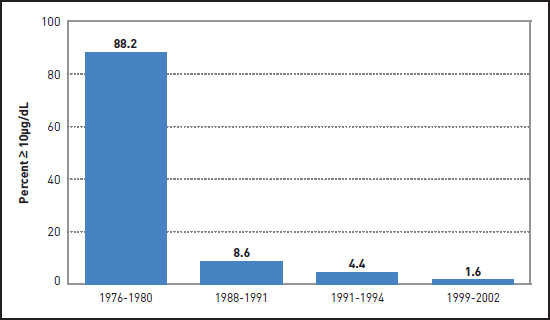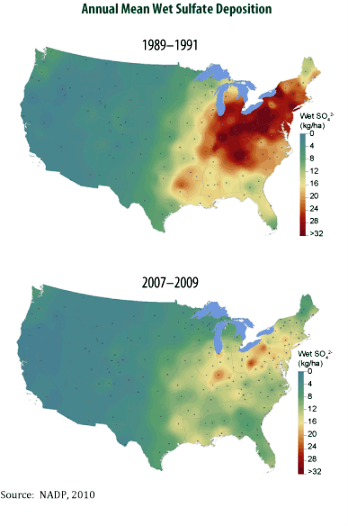The Clean Air Act is under siege. Powerful voices claim that we cannot afford both clean air and a strong economy.
There they go again.
These are the same arguments that EPA opponents have been making since 1970. Even the most successful EPA clean air programs have been subject to these same attacks when they were first proposed — in court challenges and in repeated attempts to roll back public health protections over the years.
“Sky is falling” claims from leaded gas proponents could have derailed protections for children’s health
Few regulatory programs in history match the success of EPA’s removal of lead from gasoline. Yet even this effort faced the same type of pessimism and obstructionism that EPA faces today. From the beginning of the fight to take lead out of gasoline, the oil industry and the lead additive producers said it could not be done, and even that there was no need for it to be done.
As the first of the energy shocks of the 1970s stretched gas lines around city blocks, oil industry representatives testified to EPA that the lead phase-down would cause them to lose profits, prevent them from funding future oil exploration, and make gasoline unaffordable. One lead additive manufacturer ran an ad in major newspapers claiming the lead phase-down would waste one million barrels of oil a day (the Washington Post ran an article about it on December 3, 1973.) Phillips Petroleum estimated that producing unleaded gasoline would consume between 300,000 and 600,000 barrels of additional crude oil a day and require from $8 to $15 billion in refinery capital investment (that’s from a Los Angeles Times story about a possible “Gas Octane War,” printed on December 30, 1974.)
The oil and additive industries vigorously attacked both the sufficiency and validity of scientific studies that linked lead additives to harmful public health impacts. And they kept up these attacks until leaded gasoline was finally and definitively banned by regulations issued in the 1980s.
In 1978, in 1982 and again in 1985 the industries that profited by selling tetraethyl lead tried to reverse the progress of the lead phase-down. Public health won out, but only after 15 years of defending against attacks by the companies who profited from lead pollution.
What really fell? The amount of toxic lead in children’s blood
We have all reaped striking benefits from EPA’s removal of lead from gasoline, as the level of toxic lead in the blood of American children dropped along with lead emissions to the air. EPA reports that between 1980 and 2009, lead levels in America’s air fell by 93 percent, largely as a result of EPA’s requirement to remove lead additives from gasoline.
As the levels of lead measured in America’s air plummeted, so too did the level of lead measured in the blood of American children. In 2005, the Centers for Disease Control reported that blood lead levels had fallen 98 percent since it originally collected data from American children in 1976 through 1980. In that earlier period, more than eighty eight percent of children sampled had harmful blood lead levels. Public health experts attribute most of this stunning decline to the successful removal of lead from gasoline.
Percentage of children 1–5 years old in the U.S. population with elevated blood lead levels

EDF’s The Clean Air Act at 35 [pdf], page 6, data from CDC
Lead is a neurotoxin that particularly harms children’s cognitive development and behavioral skills and also contributes to hypertension in adults and premature death. Avoiding these negative health effects has yielded tremendous economic benefits.
In its exhaustive peer-reviewed study of the costs and benefits of the Clean Air Act between the years 1970 and 1990, EPA estimated that the single year 1990 mean monetized benefit resulting from the reduction of lead air pollution was more than $150 billion.
Yet the lead additive industry valued its profits more than these health benefits. It took courage for EPA to face down the predictions of doom about taking lead out of gasoline. Our children are breathing healthier air today because EPA did its job and protected public health.
Today, we need your help to prevent a new wave of attacks on vital clean air protections for our, and our children’s, health. Read more about how the same “sky is falling” claims are now being made about other types of toxic air pollution — like mercury.
You might also want to read:
Debunking Clean Air Scare Tactics: Part One, Acid Rain
There They Go Again, Part Two: Mercury Controls on Power Plants











 This post is by
This post is by